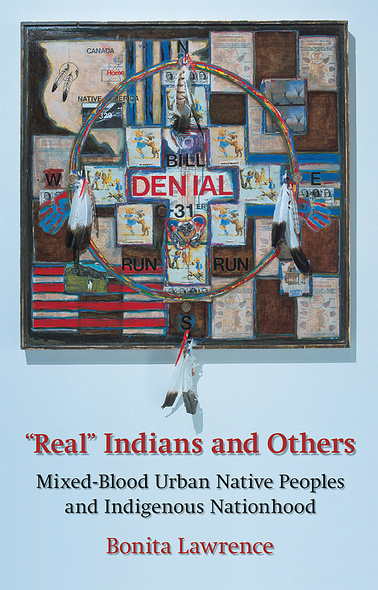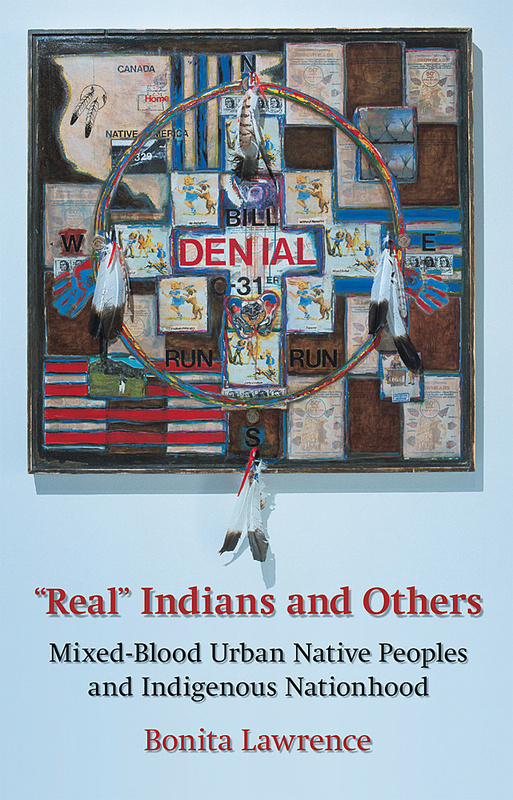
“Real” Indians and Others
Mixed-Blood Urban Native Peoples and Indigenous Nationhood
Mixed-blood urban Native people in Canada are profoundly affected by federal legislation that divides Aboriginal people into different legal categories. In this pioneering book, Bonita Lawrence reveals the ways in which mixed-blood urban Native people understand their identities and struggle to survive in a world that, more often than not, fails to recognize them.
In “Real” Indians and Others, Lawrence draws on the first-person accounts of thirty Toronto residents of Aboriginal descent, as well as archival materials, sociological research, and her own urban Native heritage and experiences. She sheds light on the Canadian government’s efforts to define Native identity through the years by means of the Indian Act and shows how policies such as residential schooling, loss of Indian status, and adoption have affected Native identity. Lawrence looks at how Native people with “Indian status” react and respond to “nonstatus” Native people and how reserve-based and other federally recognized Native people attempt to impose an identity on urban Native people.
Drawing on extensive interviews, she describes the devastating loss of community that has resulted from identity legislation and how urban Native people have wrestled with their past and current identities. Lawrence also addresses the future and explores the forms of nation-building that can reconcile the differences in experiences and distinct agendas of urban and reserve-based Native communities.
The strength of her book and its analysis lies in her use of participants’ lived experiences and their recollections of their parents’ own struggles as Indians, Metis, mixed bloods, or descendants of these groups…the book represents an important contribution to an often-neglected group of people in Canada. The strength and passion of the narrative, together with the consistency of the argument, builds a powerful case for government redress and certainly for further study and action.
Acknowledgments
Preface
Introduction: Mixed-Blood Native Identity in the Americas
Part 1. The Regulation of Native Identity
1. From Sovereign Nations to “A Vanishing Race”
2. Regulating Native Identity by Gender
3. Reconfiguring Colonial Gender Relations under Bill C-31
4. Métis Identity, the Indian Act, and the Numbered Treaties
Part 2. Mixed-Blood Identity in the Toronto Native Community
5. Killing the Indian to Save the Child
6. Urban Responses to a Heritage of Violence
7. Negotiating an Urban Mixed-Blood Native Identity
8. Maintaining an Urban Native Community
Part 3. Colonial Regulation and Entitlement to Nativeness in the Urban Community
9. Racial Identity in White Society
10. Band Membership and Urban Identity
11. Indian Status and Entitlement
12. Mixed-Blood Urban Native People and the Rebuilding of Indigenous Nations
Appendix 1: Eligibility for Status and Band Membership under Bill C-31
Appendix 2: Issues in Conducting Indigenous Research
Appendix 3: Narratives of Encounters with Genocide
Notes
Bibliography
Index




